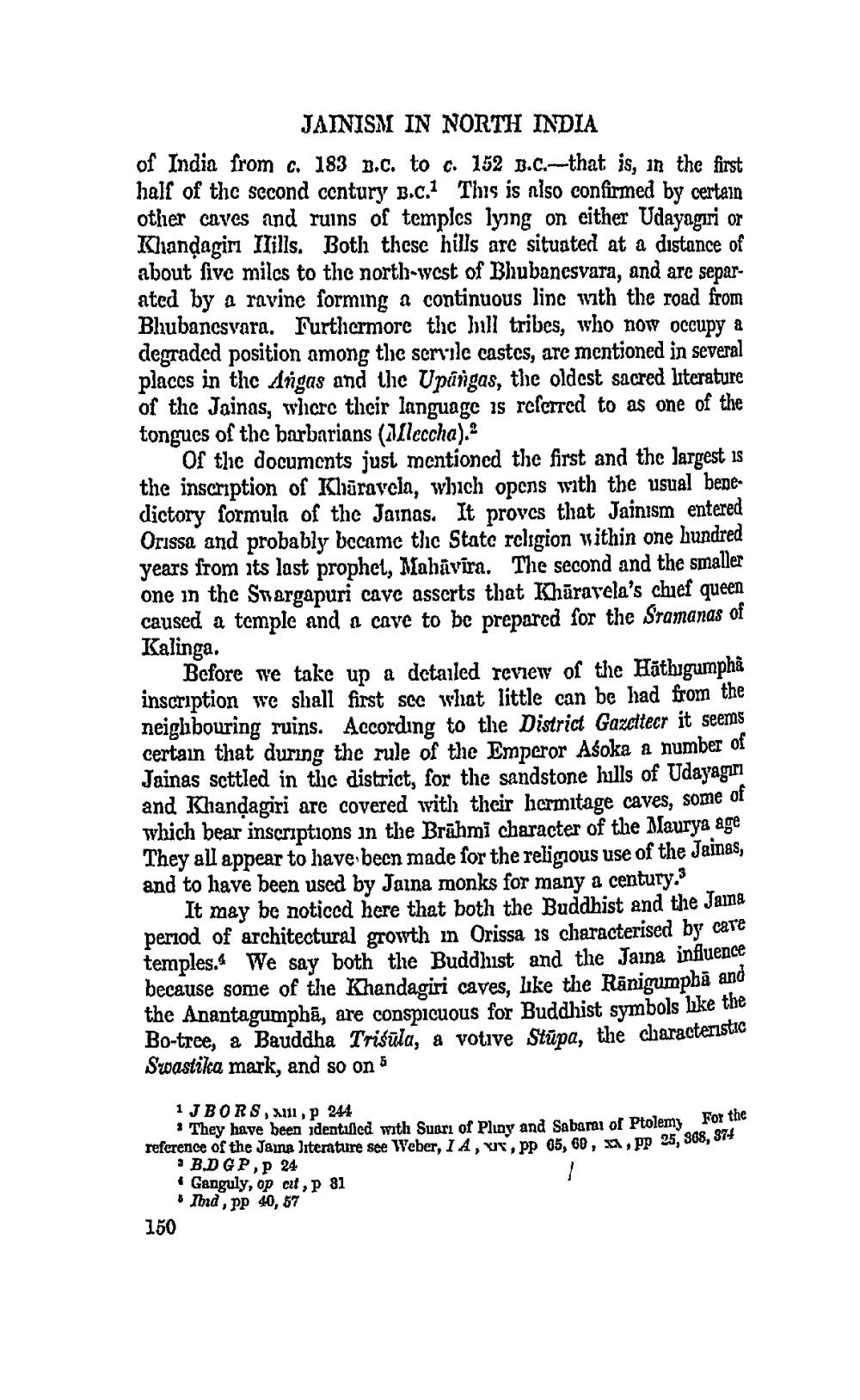________________ s Elat hin one bismaller JAINISM IN NORTH INDIA of India from c. 183 2.C. to c. 152 B.C.--that is, in the first half of the second century B.C. This is also confirmed by certain other caves and ruins of tempics lying on either Udayagiri or Klandagiri Ilills. Both these hills are situated at a distance of about five milcs to the north-west of Bhubanesvara, and arc separated by a ravine forming a continuous line with the road from Bhubanesvara. Furthermore thc hill tribes, who now occupy & degraded position among the servile castes, are mentioned in several places in the Angas and the Upungas, the oldest sacred literature of the Jainas, whicre their language is referred to as one of the tongues of the barbarians (Alleccha). or the documents just mentioned the first and the largest is the inscription of Khuravela, which opens with the usual bene dictory formula of the Jainas. It proves that Jainism entered Orissa and probably became the State religion within one hundred years from its last prophet, Mahavira. The second and the smaller one in the Swargapuri cave asserts that Kharavela's chief queen caused a temple and a cave to be prepared for the Sramanas of Kalinga. Before we take up a detailed review of the Hathigumpha inscription we shall first scc what little can be had from the neighbouring ruins. According to the District Gazettecr it seems certain that during the rule of the Emperor Asoka a number of Jainas settled in the district, for the sandstone hills of Udayagiri and Khandagiri are covered with their hermitage caves, some of which bear inscriptions in the Brahmi character of the Maurya age They all appear to have becn made for the religous use of the Jainas, and to have been used by Jaina monks for many a century. It may be noticed here that both the Buddhist and the Jains period of architectural growth in Orissa is characterised by cate temples. We say both the Buddhist and the Jaina influence because some of the Khandagiri caves, like the Ranigumpha and the Anantagumpha, are conspicuous for Buddhist symbols like the Bo-trce, a Bauddha Trisula, & votive Stupa, the characteristic Swastika mark, and so on 1 J BORS, 11, p 244 * They have been identified with Suari of Pliny and Sabara of Ptolemy Hot reference of the Jama literature see Weber, I A, VE, pp 05, 68, X , PP 25, 306, : B.DGP, 24 * Ganguly, op cit, P 31 . Ihd , PP 40, 57 150




